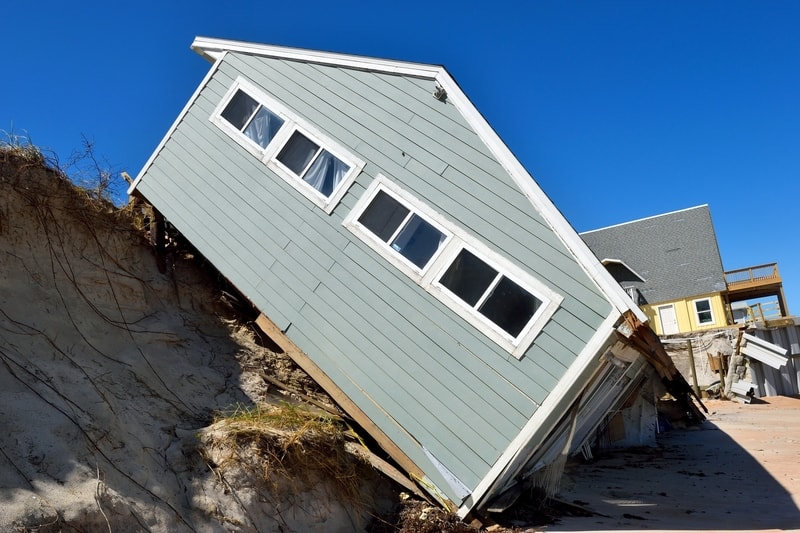Canadians need tiny home insurance that provides the same types of discounts larger policies offer
Without question the tiny home movement is growing here in Canada! Particularly as rental costs in many areas are excessively high, as well as the purchase costs of larger properties. Add to this the further increased costs driven by the COVID 19 pandemic, which leaves many of us demanding more cost effective solutions.
Table of Contents
- Consider Legislated Building Codes
- How to Improve Tiny Home Insurance Eligibility?
- How is a Tiny Home Insurance Policy Extended?
- Some Ontario Based Tiny Home Insurance Providers
- Summary…
In 2020 Narcity ran a story “Tiny Houses On The East Coast Are The Latest Canadian Real Estate Trend For 2020” were they reported:
“…people in Nova Scotia looked up “tiny homes for sale” so much that there was a 733% increase in interest from January to April 2020 compared to January to April 2019…”
and
“…Across Canada, the average searches for “tiny homes for sale” has increased by 55% since January of this year. That’s only a few percent lower than searches for full-sized houses for sale which came in at 58%…”
These numbers are not surprising given the economic (and dare I say environmental) conditions we all face. Further, in Ontario at least we arguably have a housing shortage crisis (which further increases the costs, and insurance of larger homes).

It’s no wonder then, what’s helping drive the increasing demand for tiny (and smaller) homes, along with the need for tiny home insurance.
I suspect the demand will keep growing, much larger!
Considering tiny homes cost far less to build than traditional “large” homes, and are increasingly popular, the demand for tiny home insurance is growing and requires us to do our due diligence – Not only in vetting providers, but first ensuring our tiny houses are built to the required standards (in whatever area we choose to locate).
Insurance Bureau of Canada (IBC) is the national industry association representing Canada’s private home, auto and business insurers. They provide a lot of resources (at ibc.ca) and also published “All About Home Insurance“.
Consider Legislated Building Codes
Prior to sourcing your tiny home insurance provider, there are a couple levels of building code we need to consider, to help ensure insurance eligibility:
- Provincial Building Codes
- Municipal Building Codes
as well as using the guidelines from the CSA (Canadian Standards Association).
It’s helpful to not that here, in Ontario, the provincial government publishes the “Build or buy a tiny home“
For many of us, the salient challenge is finding an insurance provider that already provides tiny home insurance (or at least will consider the option).
Two key things I quickly learned:
- If you want a tiny home built on a trailer, the trailer will have a VIN, and be insured as an RV. The problem? You’ll need to build to RV code. This means some options you may want for your tiny home, will exclude you from insurance coverage. Also your tiny home will need to be parked in “allowed areas”
- If you want a tiny home that’s built on a fixed foundation, some companies will provide tiny home insurance. Prior to this there may be some challenges from municipal government policies (so it helps to sort that out before building).
However, while this is changing, many providers won’t provide tiny home insurance because of differing home builds (and the related quagmire of municipal vs provincial laws).
How to Improve Tiny Home Insurance Eligibility?
Plainly put… For the best chance at obtaining a tiny home insurace policy that works for you, consider the following:
Ensure your tiny home is built on a fixed foundation
Make sure the tiny home is permanently situated on that foundation
Ensure municipal and provincial building codes are adhered to
Your builder (or you), should ensure the home meets CSA standard (especially weather and environmental – “Deformation Resistant Buildings“)
Your builder should be able to work with you to ensure all codes and tests are satisfied. This is why it’s important to use a reputable, reliable builder. (Often they can help introduce you to providers that supplu tiny home insurance policies).
How is a Tiny Home Insurance Policy Extended?
In reality, tiny home insurance is simple, because (as I was advised), it is included in “Manufactured Home Insurance”. I should note, that during this (length) search to find my new home, I considered other options, that also fall under this same banner:
- Prefabricated homes
- Double wide homes (generally that’s two sections towed to your location and joined together on-site). If I recall the two pieces are 6m (or more) wide and 27, length (but don’t quote me on that).
- Mobile homes
Using the Manufactured Home Insurance, like others (that being my current subdivision house) both belongings and the building are covered. If you also place an office pod on your property (if self employed for example), or even a shed, that can also be included. I have not seen any estimate for tiny home insurance coverage for personal liability that is over $1,000,000. (And don’t think it’s needed?)
Additionally the usual things are covered, such as expenses due to repairs / damage, living expenses resulting form damage, and so on.
Without question, a good insurance broker is the best person to contact to discuss and obtain a good tiny home insurance policy. Additionally, they can also help source providers that can extend discounts such as bubdling cars, boats, etc. with your tiny home insurance, or things such as fire, burgler, etc. alrm discounts.
Some Ontario Based Tiny Home Insurance Providers
Here’s the rub… Insurance companies generally won’t refuse or deny extending tiny home insurance services – But you must work with their specific requirements (an also with building codes CSA guidelines, etc.)
Below are some of the providers that may be able to provide you with tiny home insurance policies (your insurance broker can provide even more):
Johnson Insurance (a Canadian business)
Sonnet (a Canadian business)
OKJ Insurance (a Canadian business)
Again, your insurance broker can reach out much more! (Make sure you contact a broker first, they can help avoid pitfalls).
Summary…
Percolating all the above into a simplified consideration:
- Opt for a permanent fixed foundation tiny home
- Ensure all building code standards and CSA guidelines are satisfied
- Put in writing, to your broker, all things you need covered
- Employ a reliable, trustworthy builder
- Make sure tiny home insurance eligibility is built into your plans (before looking to obtain insurance)
Hopefully this introductory post about tiny home insurance, raises some good points for your research and follow up. If you have any questions, suggestions, etc., please feel free to include them in the comments below (or you can even choose to be a guest writer).
